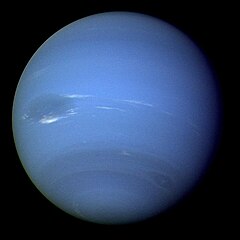https://docs.google.com/file/d/0B9veYrYAicH_N2g0ZnJxb3V1Nk0/edit?usp=sharing
You probably have heard about the story in which "Isaac Newton discovered gravity after an apple fell from a tree onto his head". Well, there's actually a lot more to the story than this (and not all of them are pleasant).
 |
| Isaac Newton (1642 - 1727) and the falling apple |
The change in position of several objects due to gravity can be worked out using calculus (differentiation and integration). Evidently, calculus was developed (independently) by Newton and another mathematician named Leibniz. Yeah, you probably have never heard of the latter, because Newton stole all the credit for himself and even accused Leibniz of stealing his ideas.
 |
| Gottfried Wilhelm von Leibniz (1646 - 1716) |
The symbols for differentiation and integration we use today were invented by Leibniz. On the other hand, Newton just used whatever symbols he could think of on a certain day.
With calculus, Newton managed to describe accurately the movements of the planets known at that time. Guess what? Unlike the other planets, the presence of Neptune was predicted using equations for gravity long before it was observed!
 |
| Neptune - the first planet to be mathematically predicted before observed. Wind speeds during thunderstorms on this plant may exceed 2 100 km/h! |
All bodies exert gravity, and the larger the body, the larger the gravitational force. Prior to the first sighting of Neptune, scientists had observed irregularities in the orbit of Uranus, which was due to the gravitational influence by the gas giants Jupiter and Saturn. However, even after incorporating the mass and motion of those two planets, the resulting equation still couldn't explain the behaviour of Uranus.
So, scientists hypothesized that there must be another planet influencing Uranus's motion and, using calculus, predicted where the "new" planet might be. Finally, in 1846, Neptune was sighted - almost exactly at the predicted position!
 |
| The orbit of Uranus is significantly affected by those of Jupiter, Saturn and Neptune - the clue to the discovery of Neptune |
Today, we know that our universe is made up of four forces (all of which are calculus-based):
1. Gravitational force
2. Electromagnetic force
3. Weak nuclear force
4. Strong nuclear force
All these forces interact with each other, and as of now, scientists have managed to explain (with very high accuracy) how the last three forces interact. In view of that, the ultimate goal of Physics is to find an equation which incorporates ALL four of them, and when that day comes, it will open our eyes to a multitude of new technologies which are way beyond current imagination!
 |
| Today, rockets are powered by fossil fuels. Who knows? In the future they could well be propelled by nuclear power, laser beams, ionized atoms, superheated hydrogen or even antimatter! |
References:
1. Michio Kaku, 2008, Physics of the Impossible, Doubleday Publishing
2. Stephen Hawking, 1988, A Brief History of Time, Bantam Dell Publishing Group.
3. http://www.uiowa.edu/~c22m025c/history.html (retrieved 08/08/13)
4. http://csep10.phys.utk.edu/astr161/lect/history/perturbations.html (retrieved 08/08/13)
No comments:
Post a Comment